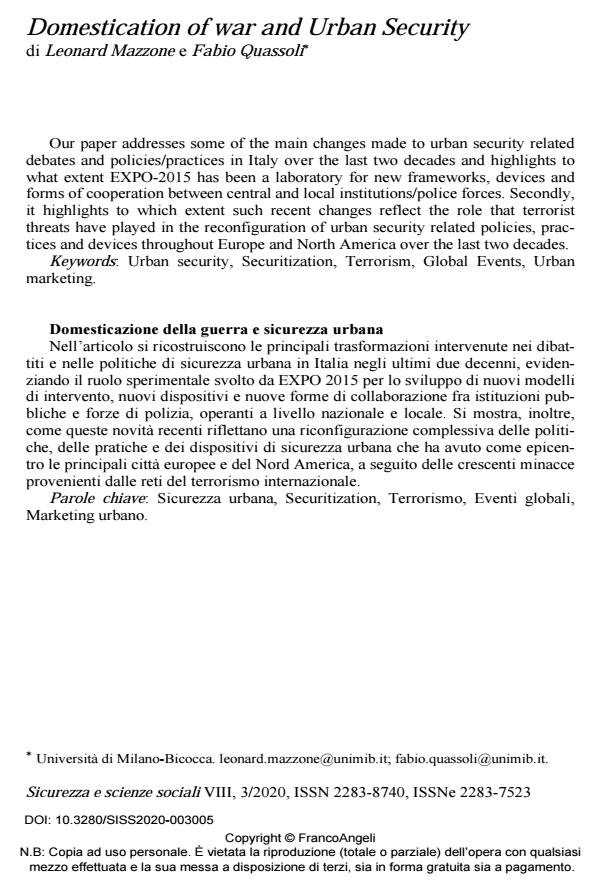Domestication of war and Urban Security
Journal title SICUREZZA E SCIENZE SOCIALI
Author/s Leonard Mazzone, Fabio Quassoli
Publishing Year 2021 Issue 2020/3
Language English Pages 22 P. 36-57 File size 247 KB
DOI 10.3280/SISS2020-003005
DOI is like a bar code for intellectual property: to have more infomation
click here
Below, you can see the article first page
If you want to buy this article in PDF format, you can do it, following the instructions to buy download credits

FrancoAngeli is member of Publishers International Linking Association, Inc (PILA), a not-for-profit association which run the CrossRef service enabling links to and from online scholarly content.
Our paper addresses some of the main changes made to urban security related debates and policies/practices in Italy over the last two decades and highlights to what extent EXPO-2015 has been a laboratory for new frameworks, devices and forms of cooperation between central and local institutions/police forces. Second-ly, it highlights to which extent such recent changes reflect the role that terrorist threats have played in the reconfiguration of urban security related policies, prac-tices and devices throughout Europe and North America over the last two decades.
Keywords: Urban security, Securitization, Terrorism, Global Events, Urban marketing.
Leonard Mazzone, Fabio Quassoli, Domestication of war and Urban Security in "SICUREZZA E SCIENZE SOCIALI" 3/2020, pp 36-57, DOI: 10.3280/SISS2020-003005